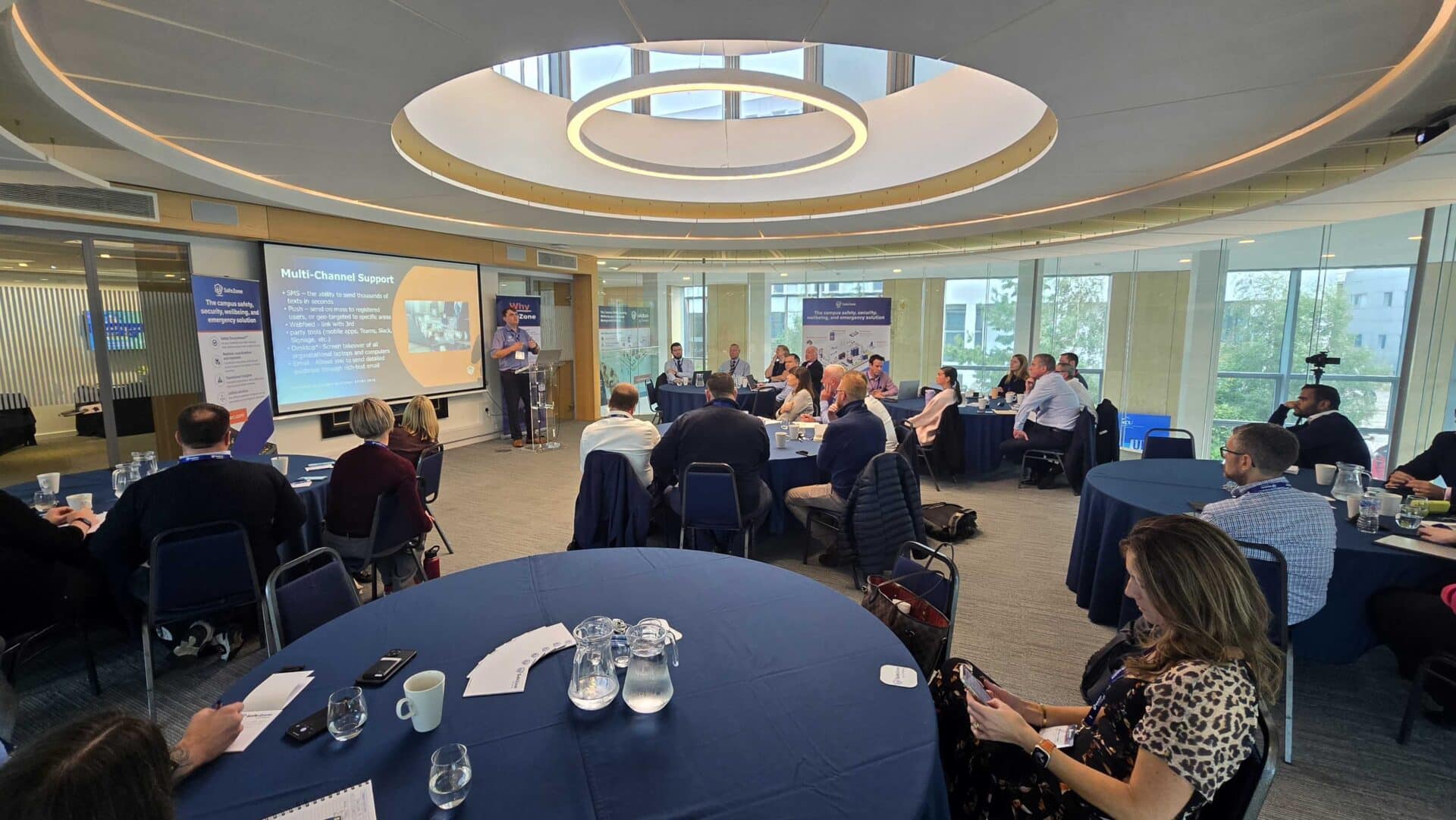Last week, the CriticalArc team were in the rapidly modernising Glasgow city centre for the SafeZone Scotland Regional Event 2025, bringing together institutions from across Scotland’s higher education sector for a jam-packed day of learning and collaboration.
Hosted in the panoramic Lantern room at Glasgow Caledonian University’s (GCU) Annie Lennox Building, this full-day event offered a valuable opportunity for attendees to connect with peers, get hands-on with SafeZone, and explore how to extract maximum value from the platform for the benefit of enhancing safety, compliance and operational efficiency. At a time when organisations are being squeezed by shrinking budgets and resource – not to mention reels and reels of red tape – this event was as timely as ever.
GCU COO reflects on socio-politico-economic challenges in Scotland
Susan Mitchell, Chief Operating Officer and Deputy Vice Chanceller at GCU, kicked off the workshop day with a warm welcome to attendees – double the turnout from last year’s regional event! Susan shared the university’s journey to acquiring SafeZone and its vision for collaborating with other organisations to transform their approach to community safety.
“The risks facing our institutions continue to evolve: from severe weather events and cyber threats to lone-working and health-related emergencies,” Susan said. “These are increasingly complex, interconnected challenges, and no institution can tackle them alone. That’s why today is so important – a chance to hear what’s working, what isn’t, and how we can move forward together with smarter tools, stronger networks, and more joined-up thinking.
“Our aim [at GCU] isn’t just to respond well when something happens, but to prevent and mitigate risk, building confidence in our systems and culture. With SafeZone, we hope to enhance our day-to-day operations as well as our response to critical incidents, improve communication across the university, and connect more meaningfully with partners across higher education and beyond to other sectors in Scotland.”
Susan’s opening address resonated deeply with attendees from both GCU and neighbouring organisations such as the University of Glasgow, Edinburgh Napier University, Heriot-Watt University and the University of the West of Scotland, amongst many others.
The benefits of omnichannel communication via SafeZone
The rest of the morning was dedicated to providing an overview of the latest updates and enhancements to SafeZone. CriticalArc’s Global Product Marketing Director, Danny Malone, explained how enhanced user permissions and role-based access control have made it even easier to share and delegate duty of care responsibilities across teams in SafeZone, ensuring they can respond faster in critical incidents and provide the most appropriate level of support to the right people, at the right time.
This was followed by a live demonstration of the platform’s ever-evolving range of mass communication capabilities that make it the ultimate omnichannel tool for resilient-centric organisations. Richard Murray, a Senior Customer Success Manager at CriticalArc, gave both new and experienced SafeZone users a practical look at how the platform enables rapid, targeted communication across different groups and scenarios.
A highlight of this session was a compelling demonstration of SafeZone’s new Public Address System (PAS) function, showcasing how the platform can trigger vital communications through PAS infrastructure and provide another dedicated channel that institutions can leverage to extend their reach, improve compliance and support consistent messaging across sites. This enables organisations to embrace a more holistic, collaborative approach to managing safety and wellbeing.

